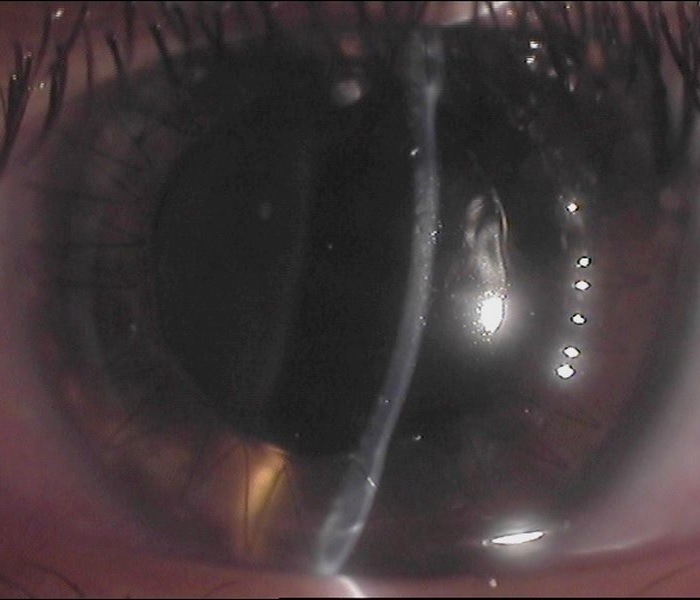Scedosporium apiospermum contact lens-related keratitis: A rare case report and a literature review
Medical hypothesis discovery and innovation in ophthalmology,
Vol. 10 No. 2 (2021),
5 August 2021
,
Page 80-85
https://doi.org/10.51329/mehdiophthal1425
Abstract
Background: Scedosporium apiospermum (SA) is commonly present in temperate climates. It can induce cutaneous and subcutaneous tissue infections as well as disseminated infections in immunocompromised or immunocompetent hosts. The eye is rarely involved. Keratomycosis is usually caused by plant-related injuries. Here, we describe a patient with a severe and sight-threatening corneal abscess caused by SA, which was associated with contact lens wear and was successfully treated with a combination of surgical and medical therapies.Case Presentation: An otherwise healthy 22-year-old woman, with history of contact lens wearing, was referred to the Ophthalmic Department of Bari University, Bari, Italy for evaluation of a corneal abscess and hypopyon in her left eye. Intensive topical and systemic antibiotic therapy was initiated after obtaining conjunctival swabs. Within 2 days, her ophthalmic condition had worsened, and her best-corrected visual acuity (BCVA) dropped to counting fingers. She underwent penetrating keratoplasty, after which her ophthalmic condition improved. Microbiological culture, obtained from the explanted cornea, revealed SA infection. This was addressed with specific topical and systemic therapy using voriconazole. Two weeks later, the condition of her left eye was stable, with mild corneal edema and no sign of acute graft rejection. Her BCVA improved to 20/25, and all medications were discontinued, except for the steroid eye drop. The patient was scheduled for a 1-month follow-up.
Conclusions: Prompt identification of the etiological agent is mandatory to perform appropriate therapy in cases of keratomycosis. Surgery to remove the infected cornea is helpful in patients with deteriorating condition, in whom the initial medical therapy has failed. Topical and systemic antimycotic therapy, based on microbiological culture, is recommended as an adjunctive therapy for the surgical management of severe corneal mycotic abscesses.

- Abstract Viewed: 203 times
- Full Text PDF Downloaded: 122 times


